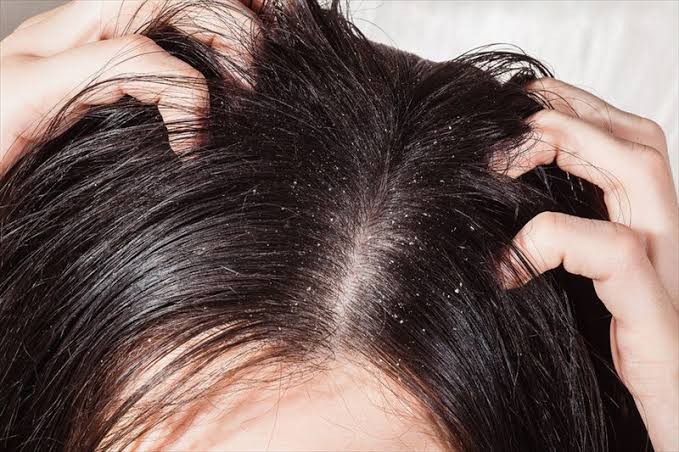Seborrheic dermatitis ( dandruff)
Skin Treatments
Other Treatments
Have Any Question?
In case you wish to avail of the services from Dr. Shailesh Singh you could contact him via the following means
Request a Call Back

What is dandruff?
Dandruff is a common scalp condition in which small pieces of dry skin flake off from the scalp and is usually associated with itching. Dandruff is considered to be a mild form of an inflammatory disorder of skin called “seborrhoeic dermatitis”.
What is the difference between dandruff and seborrheic dermatitis?
Dandruff typically affects only the scalp and is a mild form with loose adherent flaking. Seborrhoeic dermatitis can extand beyond the scalp and affects the folds besides the nose, ears, eyebrows, beard area, upper back and chest Redness and itching of the skin is seen along with flaking which may be dry or yellowish and greasy in nature.
What causes dandruff and seborrheic dermatitis?
The exact cause of dandruff and seborrhoeic dermatitis is unknown.
Possible causes include increased oil production and secretion,increased numbers of normal skin yeasts and a genetic predisposition.
common triggers (factors that may worsen) include oily skin or scalp, emotional stress, weather (cold and dry), poor hygiene and infrequent washing or shampooing. dieatry factors do not play a role.
seborrhoeic dermatitis is also more seen and more severe in HIV infection and Parkinson,s disease patients.
How does seborrheic dermatitis manifest?
seborrheic dermatitis commonly manifests in adolesce or adulthood. however it can also be seen in children as cradle cap on the scalp or as a rash in the nappy area.
seborrheic dermatitis can manifest as itchy flaking skin or the rash may be present without any symptoms.it can have varied presentations as:
- Itchy scalp
- White flakes on shoulders of dark clothing
- Scaly facial skin
- Facial rash over eyebrows, nose and ears
Recurrent ear eczema-itchy flaky skin or oozing in the ear canal
Oily scalp and facial skin with dry flakes
- Eyebrow or beard rash
Rash on the trunk(mid-chest or mid-back)-dry flakes and red spots
Rash in the skin folds (armpits, groins, under, under the breast)-redness/scaling
Is seborrheic dermatitis hereditary? Is it contagious?
Seborrheic dermatitis has a genetic predisposition and can be seen in other family members.
seborrheic dermatitis is not contagious and is not transmissible to contacts or family members.
FAQ on Seborrheic dermatitis (dandruff)
seborrheic dermatitis is diagnosed by its clinical appearance and behavior.
as some fungi are normal components of skin flora, its presence on microscopy of skin scrapings is not diagnostic.
Diagnosis of seborrhoeic dermatitis is chiefly on history and clinical examination.
There are no conclusive laboratory tests to diagnose seborrhoeic dermatitis.
Different types of shampoos may be prescribed for dandruff. These include:
- Tar-based shampoo
- ketoconazole based shampoo
- Zinc pyrithione based shampoo
- ciclopirox based shampoos
shampoos should be used at least twice a week for 3 to 4 weeks.
once applied the shampoo needs to be left on for 5 to 7 minutes to ensure adequate time for action.
All affected areas including the scalp,ears,face,and chest should also be washed with the therapeutic shampoo.
The treatment option include antidandruff shampoos,cleansers,anti-inflammatory creams/lotions,antifungals and keratolytics.
*mild topical corticosteroids,preferably in lotion form are prescribed for 1-3 weeks to reduce the in inflammation.cream based topical steroids may be used for disease affecting face,ears,eyebrows.
*topical calcineurin inhibitors such as pimecrolimus cream can be used instead of topical steroids.
*topical antifungals such as ketoconazole,clotrimazole can be used or combined with mild topical steroids.oral antifungals are indicated in severe cases.
*keratolytics can be used to remove scales when necessary,eg salicylic acid,lactic acid,urea,propylene glycol.
.the choice of treatment depends on the sites affected,and extent of symptoms.
.maintenance treatment is usually needed.
Seborrhoeic dermatitis improves with treatment,but there is no permanent cure.
Increase sebum production is an individual tendency and can recur.those who have a tendency to develop seborrhoeic dermatitis recurrently require retreatment at frequent intervals.

